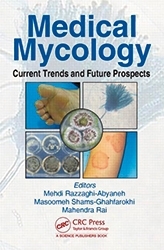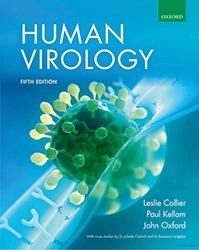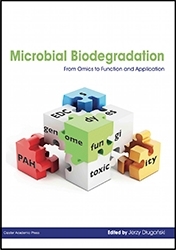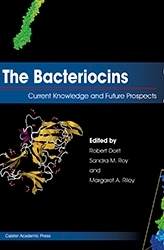Reviews
Issue: Halting Epidemics
07 February 2017 article


Medical Mycology: Current Trends and Future Prospects
Edited by M. Razzaghi-Abyaneh, M. Shams-Ghahfarokhi & M. Rai
CRC Press (2015)
£95 ISBN 978-1498714211
There is a fair amount of competition for this book, which aims to provide an overview of medical mycology with a special emphasis on fungal diagnostics. In reality it is rather an orthodox work that does less well in addressing ‘future prospects’ than on ‘current trends’. For example, there is little or nothing on the impact that next-generation sequencing and other omics technologies are having in the field, and it instead focuses on established methodologies in cytology, immunoassays and PCR. There is, however, a useful chapter on mass spectrometery MALDI-TOF methods. The chapters have some unusual vignettes that reflect the specialist interests of the contributing authors. This means that coverage of the field is not comprehensive and is often patchy. Nevertheless, there are some interesting contributions that specialists would find valuable. There are some eccentric, very long tables listings, for example, extended inventories of isolates of specific fungi isolated in Iran and of case reports of Curvularia infections. An unfortunate aspect is that the book contains quite a lot of intrusive formatting and spelling errors – a feature of the times perhaps where the costs of copy-editing are increasingly cut back. In summary, the feel of the book is therefore more of a collection of vignettes or essays on topics in the field rather that a coherent treatise suitable for a general introductory text in medical mycology. There is a strong emphasis on fungal skin infections, and students of this area will find more of interest.
Neil Gow
University of Aberdeen

Human Virology (5th Edition)
Edited by J. Oxford, P. Kellam & L. Collier
Oxford University Press (2016)
£39.99 ISBN 978-0198714682
Human Virology, now in its 5th edition, builds on the success of the previous ones, with new features such as additional and updated figures, hot topic boxes outlining cutting edge research, and more detail on pathogenesis. It claims to be “The only introductory undergraduate text to focus on human virology”, which may have been the case at the time of the book’s release, but is not the case now. Furthermore, one cannot underestimate the understanding of virology that has been gained by studying viruses that infect prokaryotes and other eukaryotic species. In my opinion, the book goes way beyond the level of understanding required to meet the learning outcomes of most undergraduate microbiology-based modules but this will only serve to encourage more enthusiastic students to challenge themselves to further their understanding. The book is divided into three main sections covering the more general principles (structure, replication, pathogenesis, resistance to infection, epidemiology), the details of specific virus groups, and more practical aspects focusing on diagnosis, immunisation and antiviral therapy. Figures and tables are very clear, and the entire book is extremely readable. Each chapter ends with reminders of the key points, examples of further reading and questions to help students to assess their understanding. In addition, an online resource centre contains MCQs, web links to animations and videos for students, and copies of the book’s figures for instructors to use in their teaching. It is certainly up-to-date, being the only undergraduate student virology textbook I have seen to date that mentions Zika virus. It is extremely good value, and I would recommend it to any student of virology. It is clearly aimed at undergraduate level but there is material in the book that will be useful for postgrads and postdocs too.
Christopher Ring
Middlesex University
The below reviews are published online in addition to those in the print or PDF copy of this issue of Microbiology Today.

Microbial Biodegradation: From Omics to Function and Application
Edited by J. Długoński
Caister Academic Press (2016)
£159 ISBN 978-1910190456
The rapid development of omics technologies has greatly transformed the knowledge and understanding on microbial biodegradation. This book is a timely and well-written contribution to this subject area. It presents in a clear framework instead of standalone chapters: it begins with the introduction on genomics, metagenomics and metatranscriptomic, followed by various analytic techniques that have been applied to study contaminant degradation, the latest advances in microbial biodegradation of pollutants, and finally, an example on the commercialisation of biodegradation research. The book is well-structured and informative, and the depth of knowledge is well judged. Undergraduate students will find the introductory chapters easy to follow and provide a good starting point on the current state-of-the-art research in the field of omics related to microbial biodegradation. Postgraduate and more seasoned researchers will benefit from the thorough reviews on the degradation of different types pollutants presented in subsequent chapters. The quality of the content of this book is very high; it will be a valuable companion to both early and established researchers.
Diane Purchase
Middlesex University

The Bacteriocins: Current Knowledge and Future Prospects
Edited by R. L. Dorit, S. M. Roy & M. A. Riley
Caister Academic Press (2016)
£159 ISBN 978-1910190371
Similar to humans, bacteria produce their most sophisticated weapons to wipe out their closest competitors, which are frequently members of their own species. In the case of bacteria, these potent weapons take the form of protein or peptide antibiotics known as bacteriocins, many of which show both high potency and exquisite selectivity.
This excellent book summarises the current state of play as regards our understanding of a wide range of bacteriocin biology, but also explores current efforts to develop bacteriocins as alternatives to traditional small molecule antibiotics for the treatment of animal and human disease. The renewed interest in developing bacteriocins as therapeutics is of course driven by the growing problem of antibiotic resistance, but bacteriocins also present the opportunity of highly targeted antibiotic therapy, which fits well with our growing understanding of the role of the microbiome in human health, and the potential negative impact of collateral damage to the microbiome caused by broad spectrum antibiotics.
The Bacteriocins neatly summarises our current understanding of the molecular basis of bacteriocin selectivity and potency at the molecular level, our understanding of bacteriocin ecology and evolution, and how this information is currently being used to develop bacteriocins as useful therapeutics. This book will therefore be of interest to anyone interested in the future development of antibiotics.
Daniel Walker
University of Glasgow


